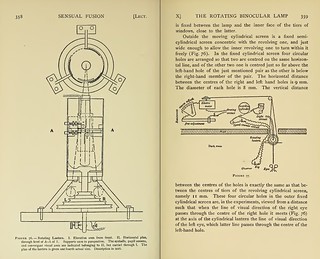- Creation
-
Creator (Definite): Otto Fritz Frankeau LeytonDate: From 1896 to 1898
- Current Holder(s)
-
- No links match your filters. Clear Filters
-
Cited by
 O.F.F. Grünbaum, 'On Intermittent Stimulation of the Retina (Part II)', Journal of Physiology 22 (6) (1898), pp. 433-450
O.F.F. Grünbaum, 'On Intermittent Stimulation of the Retina (Part II)', Journal of Physiology 22 (6) (1898), pp. 433-450
Description:'The observations given in the earlier part of this paper led me to believe that the [Talbot-Plateau] law would prove inaccurate when dealing with intense stimuli, and seemed to me worth investigation.
The method I adopted consisted in equalising the apparent luminosity of the two halves of a field, one of which was illuminated intermittently and the other continuously.
The luminosity of each half was easily adjusted, and the average physical value determinable by an apparatus, an explanation of which is most easily accomplished by reference to a diagram.
The source of light was an arc lamp (A), two mirrors (B) and (C) reflect pencils converging, towards (H), these pencils pass through lenses (E) and (D) to converge the rays, and then through polarisers (F) and (G) in order that their intensities can be regulated by analyser (K), after they have been deflected into parallelism by prisms (I), between the lamp and mirrors, sheets of ground-glass were intercepted. The size of the field was regulated by an iris diaphragm; an artificial pupil (P) insured the correct position of the observer's eye. The faces of the analyser (K) were parallel and normal to its axis of rotation: this prevented unequal reflection on its rotation.
The experiments were conducted as follows:
The analyser was placed in a definite position ɸ°, and one polariser F was turned into a position of total extinction, the analyser was then tulmed to ɸ + 90' and a black disc (R) from which a definite number of sectors of known angles had been removed was rotated between C and F.
Polariser G was turned until the halves of the field were approximately equal. After removal of the disc, the axis of G was determined by rotating the analyser to θ° where extinction occurred.
Now on turning the analyser to [(ɸ°+θ°)/2]... the two halves of the field were found to be equally illuminated when the apparatus was set up symmetrically: if this were not the case, the necessary alteration in position of lenses or mirrors was made.
The rotating disc (R) was then replaced, and the analyser turned until equality of the two halves was attained. Practice was found necessary to distinguish small differences in luminosity.
By careful arrangement of screens (S) and unstinted use of black paint, the half of the field which was intermittently illuminated appeared quite black when a sector of the disc was cutting off direct light from it: by contrast with the lighted half naturally the depth of the black appeared great, but even if a certain amount were reflected from the disc, it is fair to suppose that a certain definite fraction would be reflected, in which case, comparative results would not be vitiated in the slightest.
The usual methods of eliminating experimental errors were adopted, such as changing the polarisers, working at various parts of the scale, etc.
The most striking results were obtained by the substitution of an incandescent lamp for the arc, care being taken that the position was identical and that the plane of the filament of the lamp was perpendicular to the face of the analyser.' (439-441)







